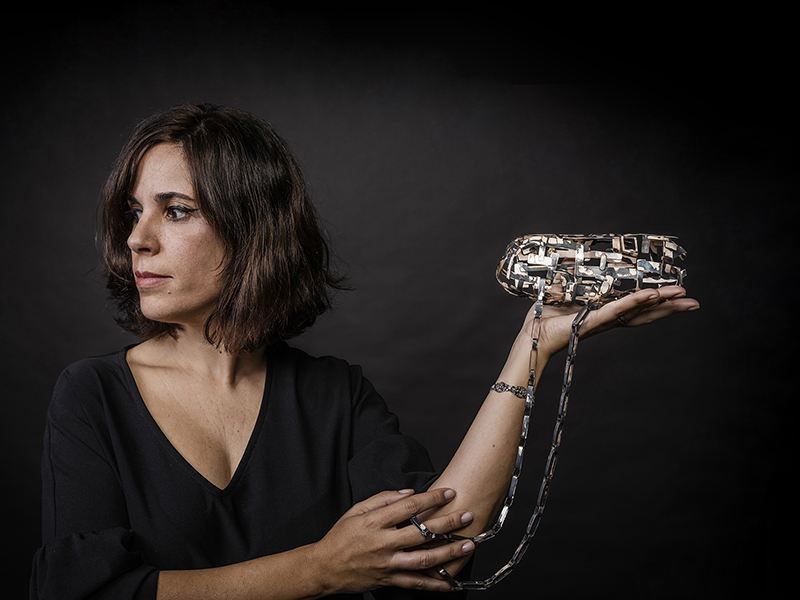
Art Jewelry Forum: Can you tell us how Tamagit diverges from a traditional gallery? Why do you describe Tamagit as both an incubator and a gallery?
Marta Tamagit: Louise Bourgeois said, “I am not what I am, I am what I do with my hands…”
I personally love the etymological meaning of the word “gallery.” It’s mysterious and I connect it with the emotion I feel when entering a cloister. A gallery, in its original meaning, is a covered passageway open to the exterior in some way, allowing light and outer influence. We call Tamagit a gallery and an incubator: this last word expresses that same feeling and sense of intimacy of a gallery—an inner space that makes us think, feel, develop, and that prepares us for when we go outdoors for exchange.
To me personally, art jewelry is precisely that: an intimate experience, a true dialogue, a prayer, and at the same time an open expression of multiple statements. Art jewelry is a language, a way to express what words cannot express; a journey from the inside to the outside and vice versa; a dynamic and ever-changing translation process. Tamagit wants to act as a translator here. So there’s no specific word that describes who we are and what we do.
We are a modest, but I believe unique, incubator of artists and wearers/collectors. We want to understand our artists in depth and transfer their stories to the other side. And we are just as interested in the wearers’ or collectors’ stories. What does that piece of jewelry mean to them? How has it transformed them? Why did they decide to purchase it? In this sense, I consider Tamagit to be a wearer- and artist-centered platform, as we’re very interested in the journey of the piece from the artist to the end wearer or collector. That translation process is what makes us different.
Moreover, we want to foster the dialogue between art jewelry and other artistic or creative expressions and bring art jewelry closer to professionals who love and consume art and culture (“celeBRAINities”) as well as to artists from different fields who might not be aware of its existence.
As we can’t do a better job than the amazing art jewelry galleries out there which we really admire and owe so much to, we’ve opted to communicate and tell stories, to (inter)act off the traditional circuits, to break the showcase, and bring jewels closer to society, to persons who might have the need and desire to learn more about art jewelry but who might not know where to start.
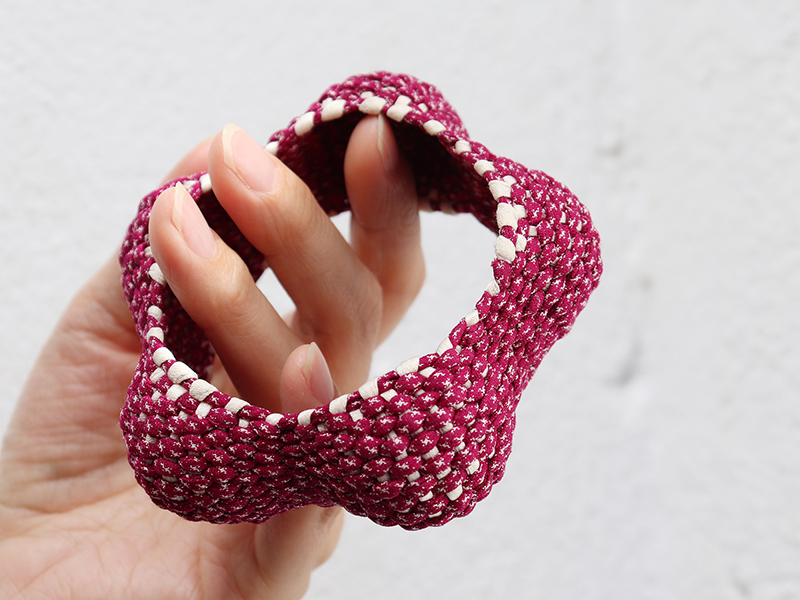
Your original name is Marta Rodriguez, but you also go by Marta Tamagit. You’ve also named your incubator and gallery Tamagit. What is “tamagit”?
Marta Tamagit: Six years ago I met Karim Oukid, an extraordinary, warm jeweler from the Kabyle, in Algeria, who was a professor at Escola Massana, in Barcelona. At that time, while I was studying art, literature, and philosophy at the graduate level, I was about to launch a personal project on jewelry for which I aimed to identify prestigious jewelers based in Barcelona to interview and connect conceptually. Back then I was also questioning my personal “collections” of jewelry from Turkey, India, Nepal, Tibet, Egypt, and Morocco, and I needed to understand why jewelry had meant so much to me since my childhood. It was a moment of self-discovery through jewelry.
While talking to Oukid in his atelier in Barcelona and asking him what jewelry meant for him, he recounted a beautiful anecdote about his mother, who was also from Kabyle. Oukid said that he could always recognize his mom from far away without seeing her because of the sound her jewelry made when she walked or moved. In that moment I visualized a young boy waiting for his beautiful mother, excited about her coming home as her bracelets tinkled while she walked. I had tears in my eyes. It somehow made me feel Oukid’s mom and remember how much I love my son, David. I also realized then that jewelry is much more than luxury or beauty. Jewelry can mean “mother,” “woman,” “flesh,” “land,” “love,” “body,” “heritage.” Jewelry is emotion. Jewelry is narrative. Jewelry is both local and universal.
After meeting him I read about the jewelry of Berber women and at that point decided to call my project tamagit, which means “identity” in the Amazigh language. It’s a tribute not only to a particular woman but to all women at the same time because, as I learned from the Berber tradition, women are the ones conserving the heritage and keeping certain values alive. They preserve culture. So, this is all Tamagit. And although my interest now lies in art jewelry, I haven’t forgotten my origin and love for jewelry from countries outside my own. No tabula rasa.
And why did I change my family name? Well, every person I met at an exhibit or a jewelry-related event used to call me Marta Tamagit. It felt somehow natural to abandon my given name, Rodríguez, and go for Tamagit.
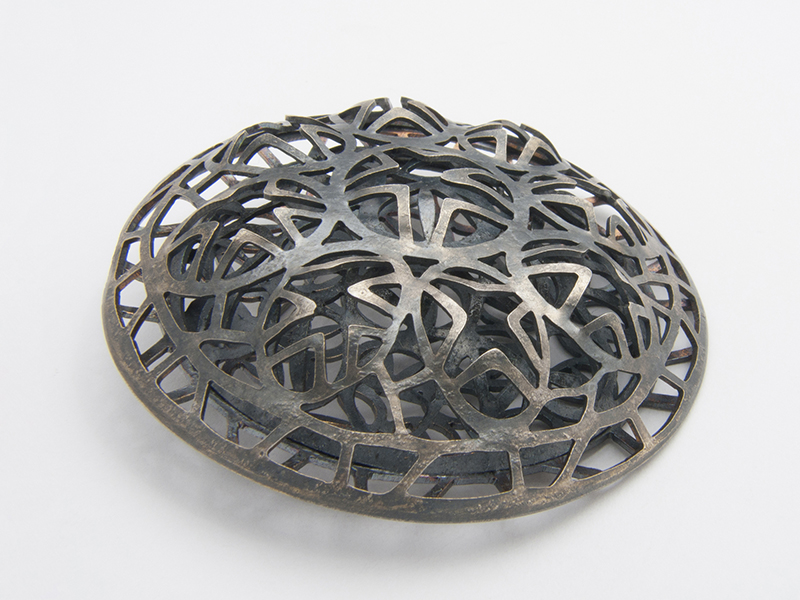
AJF has an international audience, and there’s much debate about race and power dynamics—among other things—taking place around the world right now. How would you respond to the statement that using a word from the Amazigh language to name the gallery is a form of appropriation?
Marta Tamagit: We do not consider the word Tamagit to be a form of “appropriation” but a source of inspiration. The word itself is a loan from the Tamazight (Amazigh) language, a tribute to minorities who resist oppression, to women, culture, tradition, preservation. It’s meant to be a praise of authenticity, identity, the freedom of simply existing the way you are.
In this rapidly changing world in which we are living, art (jewelry) is a form of innovation, but it also has memory. Moreover, art isn’t innocent, as it can have multiple layers or readings. The word Tamagit embraces all those ideas. It cannot be understood in a “naive” or simplistic way. On the contrary!
Last but not least, do not forget that I am Spanish (everyone knows of our rich and long-lasting coexistence with, and influence by, numerous cultures, especially Muslims and Jews). We share borders with France, Portugal, and (almost with) the African continent, so all this is natural to me. I do not see any other way of living and understanding creation other than in diversity. That’s precisely what Culture with a capital C is about.
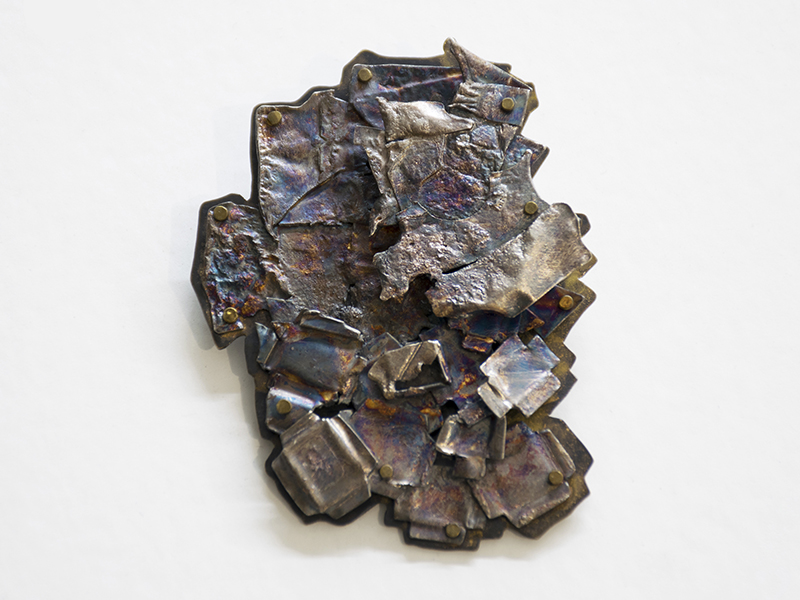
What’s a day in your life like? Do you work full-time on Tamagit?
Marta Tamagit: I’ve worked for many years internationally in higher education, research, and ethics. I now combine both fields, projects in higher education consulting and Tamagit. I own my time and don’t operate in terms of full- or part-time. Both education and art are part of my life. Those two fields are interconnected, so I don’t feel they’re mutually exclusive, but rather are mutually enriching.
Jewelry artists are also very much involved in teaching and research. Influences don’t contaminate. They open horizons, and I’m glad my personal situation now allows me to have the freedom to master my time and priorities.
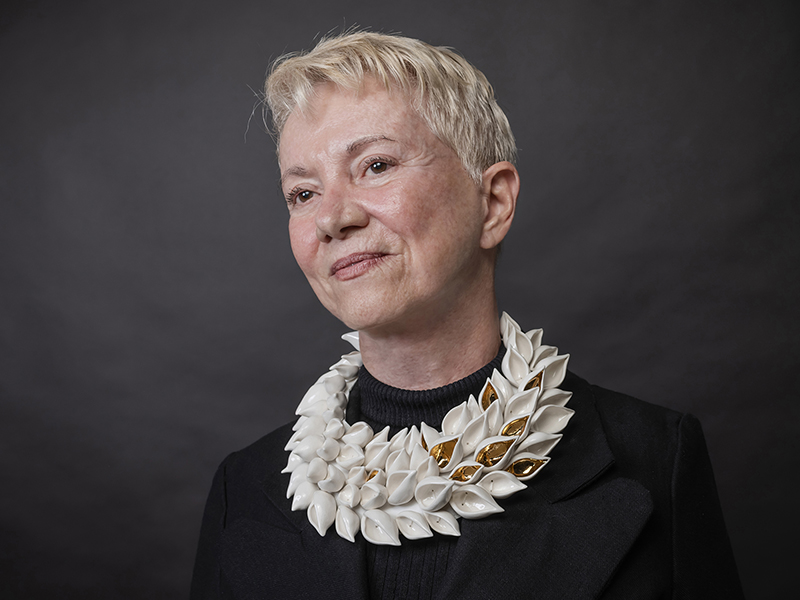
You have an academic background in literature and translation. How did you find your way to art jewelry?
Marta Tamagit: I’ve always loved jewelry from Turkey, India, Nepal, Tibet, Egypt, and Morocco, which I purchased on travels there between 1992 and 2004. I still love it. I used to collect it randomly, but after meeting Escola Massana professors and researchers and reading more about art jewelry and studying aesthetics, philosophy, and literature in depth, I couldn’t go back to where I was before as I started conceptualizing jewelry as art and not as adornment or cultural heritage.
Back then I was looking for some critical thinking, questioning, and dialogue with other arts. The jewelry in my collection back then reminded me of my travels throughout Asia and Africa and of the values, aesthetics, and roots of cultures other than my own. But at a certain moment in my life I was trying to understand another type of jewelry that was visually not so appealing but that was clearly extremely challenging for me. I was striving to hear the artist’s voice in a piece of jewelry.
After meeting Karim Oukid, I got introduced to an outstanding renowned art jeweler, professor, author, and researcher: Carles Codina i Armengol. Codina is an extremely sincere and down-to-earth person who generously gave me information and guidance in the art jewelry field. Back then I was very interested in understanding the connection between research and art jewelry, between education and art jewelry, so Professor and master Codina was the key person for me. I can’t thank him enough.
Why does art jewelry mean so much to you?
Marta Tamagit: As I said before, art jewelry is a language—a language that evolves and is nonverbal. I want to relate and translate certain works of art jewelry to wearers or collectors. It’s my dream to decipher some jewels as a sum of mysterious codes: the morphology of materials, the syntax of technique, the semantics of the concept behind the piece.
It’s almost like a hermeneutical task. It’s a great challenge to get close to a work of art jewelry. It can even be scary, as pieces do not speak for themselves. With traditional jewels one knows that it’s mostly about material, brand/designer, year, history, technique, style. With artistic one-of-a-kind pieces, nothing is obvious. It requires time, distance, sensitivity, and many more skills. I guess that is art: it’s a never-ending journey. It can lead to multiple interpretations that change throughout the years, and different lenses. The important thing is that those works of art last and influence other works.

You wrote an article about how the meaning of “luxury” differs when it’s used to describe high-end fashion brands and when it’s used to describe art jewelry. Can you talk more about this?
Marta Tamagit: That article referred to the motivation certain persons have to buy high-end fashion items. When I walk down the beautiful Passeig de Gràcia, in Barcelona, it makes me feel really sad that there are so many people buying everything and anything in a compulsive manner just because they see a certain logo outside a shop. They have the need to belong to a group. They want to be seen and recognized among a certain collective. And that is what they call luxury.
When someone asks me why art jewels are so expensive I can only laugh, and I immediately visualize that same scene taking place in any “exclusive” shopping boulevard on our planet. They are all the same.
To me the real luxury lies in wearing a unique, one-of-a-kind piece of art jewelry that will surely have a transformative effect. Imagine if you could wear a Picasso or a Warhol canvas on your body! Imagine if your body sounded like a Mahler symphony or a Bach cello suite! It’s an honor to carry a piece of wearable art that has been created by a certain artist in response to X circumstances or ideas. That is real luxury—connecting with the artist and something greater through that specific artistic piece on one’s body.
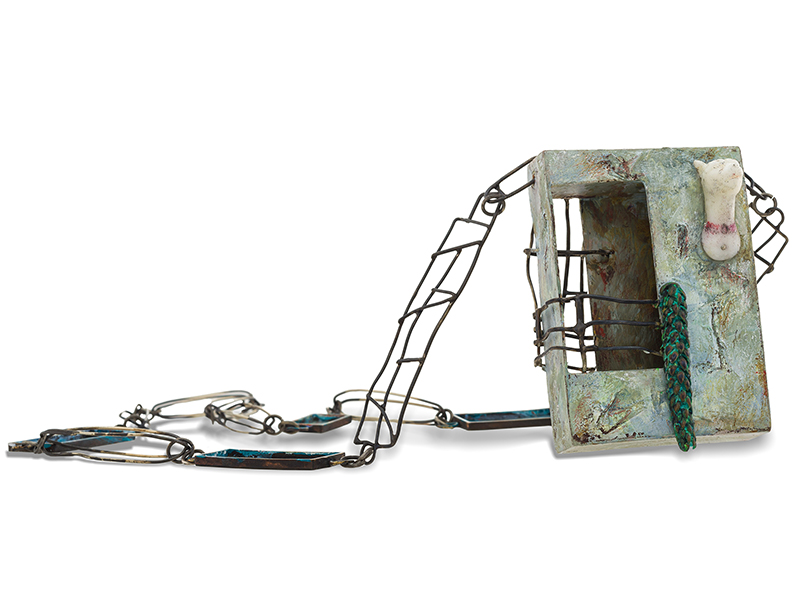
How do you find and select the jewelry artists you represent?
Marta Tamagit: Right now, we support, promote, and represent certain curated pieces by the following selected artists: Raluca Buzura, Nuria Carulla, Lluís Comín, Natsumi Kaihara, Yumi Kato, Xavier Monclús, Estela Sáez, Karim Oukid, Nassrin Vessalian, Yiota Vogli, and Snem Yildirim. (I say “we” because Tamagit has an advisory board that guides us in these and other decisions. Currently our appointed advisors are the philosopher Carlos Girón, the visual artist and curator Katia Muñoz, and the professor, linguist, and human rights activist José Luis Regojo. Moreover, we consult with art jewelry scholars and professors.)
At the beginning, most of our artists were connected to Barcelona simply because it was easier to talk to them, to see their work anytime we wanted, to even go out with them for coffee, lunch, or dinner. However, very soon we started considering other artists that are geographically far away but conceptually very close by, such as Nuria Carulla, in Colombia; Snem Yildirim, in Turkey; Yiota Vogli, in Greece; Nassrin Vessalian, in Iran; or Natsumi Kaihara, in Japan.
So what are Tamagit’s selection criteria? I personally need to understand the artist’s journey, not only the momentum of certain work, I need to speak to and get to know the artist and interview her/him, I need to see and touch and put on the artist’s pieces, I need to follow up on that artist really closely. When all that happens and I/we can identify a voice, critical thinking, originality, and a certain continuance or future, we welcome the artist to join us. Many artists have approached us lately, asking to be part of Tamagit. In many cases, we must defer the selection process due to lack of time. We want this project to be personal, and we accept what we can handle and take care of. It has nothing to do with the quality of the artist.

Nassrin Vessalian’s brooch, The Wound of the Land, is constructed with layers upon layers of latex, acrylic resin, and acrylic paint, which are then pierced through with a steel pin. Can you tell us more about this intriguing brooch?
Marta Tamagit: Vessalian is an extremely talented and special artist. I think that her jewels are powerful statements of silent pain. This specific brooch expresses so much… I’m glad you asked me about it. The steel pin is a needle that has been forced in our flesh. It hurts, it’s painful. At the same time, it does remind us that we’re alive.
The artist here has tried to express her sense of injury, of pain as a citizen of her beloved Iran, and as a human being, as a woman. It hurts, but at the same time the jewelry expresses a possibility, a potential of how it was before or could be. When someone gets hurt, it’s painful, but at the same time we remember how it was before or how it could be without that pain, so pain helps us reflect, act, and move on, because we know it’s a transitory state.
As for the technique and materials applied, Vessalian has been in search of chemical, physical, and biological attributes. This is exactly how the artist understands art: as an attraction, a touch and a dialogue between organic, natural textures and more artificial ones that question nature, that question life itself. A painful contradiction. Made of latex, acrylic resin, and maize leaf molding, and having red tints (representing blood), I understand The Wound of the Land as a metaphorical brooch in which the body becomes the land we inhabit.

Self Portrait II, a brooch by Snem Yildirim, utilizes lenticular printing that shows two unique images when viewed from different angles. What’s the story behind the two hand gestures, one which signifies approval and the other silence?
Marta Tamagit: I wrote a post about one of Yildirim’s brooches some years ago. I had seen that piece in person and it had impressed me. I was giving my particular “translation” of it, and she immediately reacted to it. She was impressed by the way we had connected through her brooch without even knowing each other. I was of course even more impressed and pleased with her art and her reaction. So we decided to meet in Barcelona. After talking to her and seeing more of her pieces, I knew everything she does is authentic and revolutionary. I’ve been following Yildirim’s work and love the combination that can be found in some of her jewels between autobiographical elements and her strong questioning of social and political issues. She knows how to jump from the “I” to “them.” Moreover, whereas her pieces are formally experimental, they’re all created in an impeccable manner.
I’m really glad you ask me about this specific broch. Self Portrait II combines two images with lenticular printing via which the artist creates a never-ending motion. It feels like a loop of a movie. It’s interesting to see that her images are the result of multiplying self-portraits. Really original. The viewer sees cold facial expressions that repeat over and over again. It’s somehow disturbing and sarcastic. The two images shown in this brooch show the effect of control mechanisms on human beings: subjects become silent, obedient, frustrated. The shush! finger and the gun finger are the symbols on the brooch, and one turns into the other as the object moves.
No wonder the brooch is part of Yildirim’s series called Mein Lieber Diktator. Quite applicable in our current “democratic” countries, right? Shush!!!!
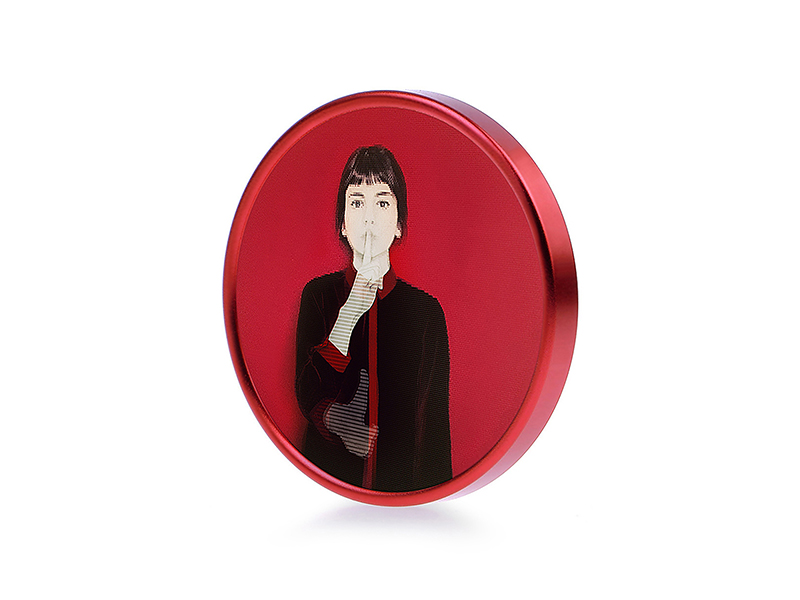
Would you please share something thought-provoking you’ve recently read, heard, or seen with AJF’s readers?
Marta Tamagit: Back when I studied art and literature at the university, we had a fundamental book that I have recently revisited. I think it can shed light on so many questions we all have when it comes to understanding or explaining to third parties, or sometimes even ourselves, what art jewelry is all about. It’s the renowned essay by José Ortega y Gasset, The Dehumanization of Art. It dates to 1925 yet is still so relevant now. I love this about literature, philosophy, and art. There are certain works that become timeless.
Some of Ortega y Gasset’s writings didn’t receive a popular reception. This book can be wrongly understood, as if the philosopher is elitist and creates two groups of people: the ones who understand modern/avant-garde, nonrepresentational art, and the others who simply don’t. I personally dislike elitism. Everyone should be able to be exposed to art. But I do think that the lack of stimuli, knowledge, and interest from institutions can push persons or collectives away from certain artistic expressions and force them to have prejudices or— even worse—to make that art invisible to them. I believe in education. Art has to be explained. So, I feel it’s our task to “translate” those “new” forms of art which are quite accepted in other disciplines but are still new and confusing when it comes to jewelry.
Ortega y Gasset writes: “As soon as the purely aesthetic elements become dominant and detached from the human story, the public loses its way and does not know what to do before the stage, the book, or the picture. Understandably, people know of no other attitude when faced with such objects than that of habit, the habit of always becoming sentimentally involved. A work which does not invite this involvement leaves them without a role to play.”
I believe this message can be perfectly applied to the jewelry field. As long as jewelry is not understood as a discipline detached from the sentimental aspect and monetary value of its materials, from commercial brands, and from a conservative concept of “beauty,” art jewelry will be hard to understand and to appreciate. So, to the dehumanization of modern art that Ortega y Gasset wrote about I would also add the idea of the “de-beautification” of jewelry. Art jewelry is not about beauty. It’s about time that we start thinking jewelry, not only seeing jewelry, not only translating jewels into market value, fashion trends, or status, but to authors, movements, streams of thought. Works of art jewelry dialogue with other artistic expressions and with humanity itself. Art jewelry has a transformative power. It can actually change us and the world we live in.
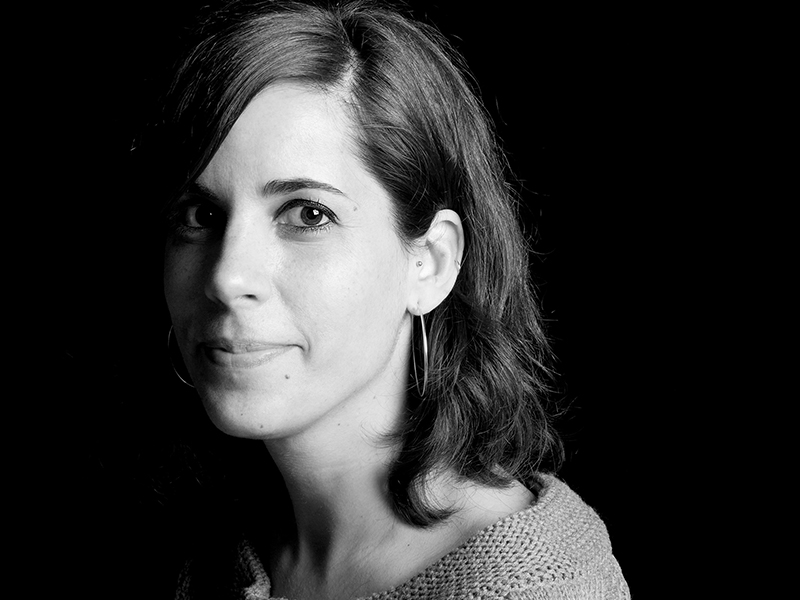
Thank you, Marta!
Marta Tamagit: Thank you for this interview. Thank you for supporting art jewelry.




